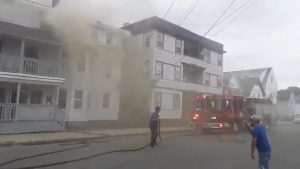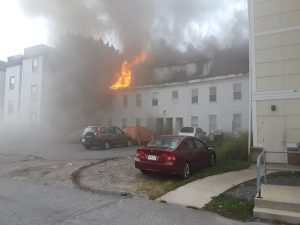
By Liz Hampton
HOUSTON (Reuters) – A NiSource Inc affiliate failed to require contract repair crews to relocate pressure sensors during natural-gas pipeline work, the National Transportation Safety Board (NTSB) said on Thursday, resulting in overpressured lines that caused explosions and fires in three Massachusetts communities last month.
Overpressurized gas poured through Columbia Gas Co of Massachusetts’ distribution system in Lawrence, North Andover and Andover, flooding into homes and businesses and sparking explosions and fires that killed one person and injured 21.
Critical valves controlling the gas flow were not shut for nearly 3-1/2 hours after the first alarm was raised at Columbia Gas’s monitoring center, NTSB said in a preliminary report. The center had no ability to remotely open or close valves on its own, but did notify technicians, it added.
NiSource is fully cooperating with the NTSB, Chief Executive Joe Hamrock said in a statement on Thursday. However, it will not comment on the cause of the incident until the NTSB completes its work, he added.
The incident raised safety concerns about the sprawling U.S. networks of aging pipelines. The September explosions and fires damaged 131 homes and businesses as Columbia Gas was replacing cast-iron pipe with safer plastic lines when the accident occurred.
The NTSB laid out the timetable of events in a dry account of the company’s activities that day.
Crews were working for Columbia Gas in Lawrence, a city northwest of Boston, to replace an aged cast-iron main with a new plastic distribution main line. The abandoned main had regulator sensing lines used to detect pressure in the system.
After that main line was disconnected, the sensing lines lost pressure and the regulators fully opened, “allowing the full flow of high-pressure gas into the distribution system supplying the neighborhood,” the report said.
Columbia Gas had approved a “work package (that) did not account for the location of the sensing lines or require their relocation to ensure the regulators were sensing actual system pressure,” according to the NTSB.
Minutes before the explosion, Columbia Gas’ monitoring center in Columbus, Ohio, received high-pressure alarms for its South Lawrence gas pressure system. The company shut down the regulator at issue about 25 minutes later, around 4:30 p.m, the NTSB said.
September’s explosion was the largest U.S. natural gas pipeline accident since 2010 in terms of structures involved. Eight years ago, an interstate gas transmission line operated by Pacific Gas and Electric Company ruptured in San Bruno, California, killing eight people, destroying 38 buildings and damaging 70 others, according to the NTSB.
Columbia Gas has said all cast iron and bare steel piping in affected neighborhoods will be replaced with high-pressure plastic mains that have regulators at each service meter.
(Reporting by Liz Hampton; Editing by Leslie Adler and Richard Chang)







